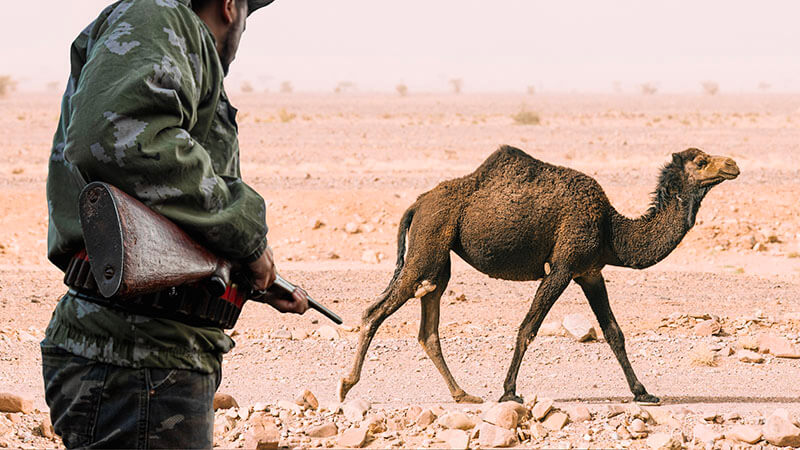
AE 1055 - INTERVIEW:
Freedom vs Lockdown in AU, Clever Snakes, & Why Animals Lunge When Scared
Learn Australian English in each of these episodes of the Aussie English Podcast.
In these Aussie English Interview episodes, I get to chin-wag with different people.

In today's episode...
Happy Sunday, everyone!
I got my best mate Ross McGibbons back on the podcast today!
In today’s episode, we talk about his latest fund-raising project in which 12 of his most iconic snake photos will be put on a calendar for 2022.
25% of the proceeds will be donated to the Royal Flying Doctors Service (https://www.flyingdoctor.org.au/) and the Global Snakebite Initiative (www.facebook.com/SnakebiteInitiative).
It’s a must for the wildlife lover in you!
Don’t forget to check out Ross’ calendar at https://rmrphotography.com.au/2022-calendar/
See you on the next episode!
Improve your listening skills today – listen, play, & pause this episode – and start speaking like a native English speaker!

Watch & listen to the convo!
Listen to today's episode!
This is the FREE podcast player. You can fast-forward and rewind easily as well as slow down or speed up the audio to suit your level.
If you’d like to use the Premium Podcast Player as well as get the downloadable transcripts, audio files, and videos for episodes, you can get instant access by joining the Premium Podcast membership here.
Listen to today's episode!
Use the Premium Podcast Player below to listen and read at the same time.
You can fast-forward and rewind easily as well as slow down or speed up the audio to suit your level.
Transcript of AE 1055 - Interview: Freedom vs Lockdown in AU, Clever Snakes, & Why Animals Lunge When Scared
G,day, you mob. Pete here, from Aussie English, how's it going? Welcome to this episode of Aussie English, the number one place for anyone and everyone wanting to learn Australian English. Today I have the very first of three, count 'em; one, two, three, episodes with my dear friend Ross McGibbon.
So, we sat down for a bit of a chat, we had a bit of a yarn and it ended up being about an hour and a half, an hour and a half that we were chatting away about a bunch of different topics. In today's episode, part one, we kind of just have a free flow chat about what his life has been like over in Western Australia during COVID.
He is an amazing reptile photographer, so he's been going on trips and taking phenomenal photos of goannas, snakes, geckos, all kinds of awesome animals in WA. We talk about handling snakes, having pet snakes, my master's degree and goannas, all kinds of stuff, so I think you're going to get a lot out of it. Now I got Ross on recently because he's doing a special fundraising sale of his 2022 calendar, his reptile calendar.
25% of the proceeds are going to be donated to the Royal Flying Doctor Service here in Australia, so they are a service that flies planes into remote parts of Australia to help people who are injured or in trouble, or who may have been bitten by a snake like Ross has.
Check out the previous episodes to learn about that. And the Global Snakebite Initiative. So, the Global Snakebite Initiative is a non-profit charitable organisation working hard on many levels to ease the burden of snake bite around the world. So, make sure that you go and check out these calendars, guys.
They're only $35, but the proceeds go to a good cause and are going to help people who get in trouble in the bush. So, without any further ado, guys, let's get into this episode.
G'day, you mob. Welcome to this episode of Aussie English. Today I have 3rd time appearance Ross McGibbon, mate. I don't know, you might be the first number three interviewee to return, so welcome back.
I made it. Mate, I'm honoured. I always enjoy our chats.
Yeah. So, you've been on the other side of the, what would you say, the Nullarbor Plain? You've been over in WA, avoiding all of the shitstorm that is COVID in Australia.
Pretty much, mate. Pretty much.
Has life been different or have you just been living it up like normal?
Well, life's been, I guess, fairly usual over here, you know, still being able to have the freedom to, you know, get out and travel and do what we want.
Yeah.
Although every single trip that I've tried to take in the last probably two years or one and a half years has been hampered by COVID. Like the one in November last year, this time last year, I got 200km from the South Australia border and then had to turn around because my mates were ringing me going, don't go into South Australia, they've just gone into lockdown.
So, what, you get stuck there? Like you could enter, but you'd have to go into quarantine for two weeks or something and then WA would be like, you're not coming back, mate.
Yeah, yeah. And I had a four-week trip and it wasn't worth, you know, I had a lot planned, so it wasn't worth coming back and spending half of it in lockdown. So, didn't go to South Australia and ended up going to the Northern Territory instead, and that was still good, you know, still stuff there.
So, we're lucky we've got neighbouring states that we can jump over to, whereas I do really feel for people in New South Wales and Victoria, like yourself, mate.
What can you do? You just got to ride it.
Ride it. That's it, mate.
Get double jabbed. Have you had the vaccine yet?
I have been, yes. So, I'm a firefighter, so...
Oh, it's mandatory, is it?
Well, they're just bringing- They've just brought out the mandate, but I got it done probably about eight weeks ago, so.
How did you feel about that? And has there been a reaction from other fire fighters or people in WA who've been sort of, you know, forced to get the vaccine in order to do their job?
Because over here, obviously we've had the virus a lot more, so people are kind of probably a little more accepting of that kind of mandate to come through. Whereas in WA, you guys have had bugger all cases, right? Barely anything. And so, I can imagine there's more of a reaction of like why? You know?
Yeah, I do understand there's definitely arguments for both sides. But when it came down to my rationale, I just did a personal list of in my head sort of thing. You know, what are the pros and cons of getting it? And the cons were just too far- Yeah, too much, it was too much for me, like not being able to travel interstate.
A) I need it for my job being defence and stuff like that, so it was really a no brainer for me. And the other thing is I've, you know, been in the army, so we, you know, when I first joined the army, we were getting like, you know, four in a day...
Really?
...Stuff like that until...
If you're going overseas or something?
Yeah. Well, you get jabbed with just about everything for local. And then before you go overseas, you get specific ones for overseas. So, you know, I'm young, fit, healthy, didn't have any worries with it. So, I just went and got it done. And personally, I had zero side effects...
Animal.
...Yeah. A tiny bit of pain at the local site where it was jabbed, and that's about it like afterwards, but.
So, not even as bad as the snake bite that you copped back in the day.
Not even as bad as the snake bite. Nup. So, yeah, I can compare it to that.
Yeah, probably one of the very few people who can.
That's a double jab as well.
I was about to say that brings a new meaning to being double jabbed, right?
Yeah, exactly. So...
Maybe that's what they need. They need just snakes that have been like genetically modified to carry the vaccine as venom, and then they just let them loose on the population of Australia.
Well, just touching on that, they do use snake venom for a lot of stuff, you know, so they use it in like blood clot medication and to help with strokes and heart attacks. And even I heard there was some research being done into how it can help with breast cancer or something like that. So, yeah, snake venom is actually quite useful in that regard, and that's one thing that people overlook.
It's nuts. I think I heard that about, is it the cone shell? The cone snail, right? That snail that...
Cone shell, yep.
Yeah, those snails that have these sort of spiral cone like shells, I guess, hence the name, that live in wherever they live, Indonesia in the tropical waters up there in the north. And they create really complex venom. Might have lost him. He's back. You there?
Hey, dude, I think you've frozen a bit there. Yep.
Alright, he's back. Yeah, they have the- Apparently, they have the most complex venom of any animal. I think they have something like 1 to 2,000 compounds in the venom that they create, and it's constantly changing.
They're really variable in terms of how quickly their venom changes because they have to be able to kill things, different kinds of fish and crustaceans and all sorts of different animals all the time and really quickly because they're snails. And so, it's just nuts how much they're studying...
...That's fascinating.
Yeah, they're studying it to try and learn about preventing cancer and everything else, and I was just like, Jesus! Snails. Bloody hell. Creepy as.
Yeah. Yeah. Well, it's one of those things that people don't know about and, you know, venomous creatures, you know, despite all the hype about them, they are quite useful. A) Just useful in the environment for pest control and, you know, being that middle order predator where they keep things, other things in balance.
And then you've got obviously the fancy ways that we're figuring out how to utilise, you know, their compounds and help us as a species as well.
Did you grow up with that kind of culture at home of if you have a huntsman in the house, just leave it alone, let it kill the other animals?
Look, I mostly grew up with my mum and two sisters, and I can't remember mum being overly, you know, fazed about anything. So, it wasn't really like anything that was dangerous and had to die. But certainly, when I got out on the farm later in life, I was about 11 years old when my mum met a farmer and things got turned upside down when we moved out there.
And that's when I had to get used to the old farmer prejudice of killing animals that are an inconvenience or a perceived danger to you.
Yeah, I had that with my grandfather having that sort of- He has a farm up near Bendigo, and I remember him finding a red bellied black snake's nest under our house with, I think, newly hatched babies. And so, there were all these small, red bellied black snakes just around the house getting into it, and he was just like, I don't want to, but I'm going to have to kill these things.
Because I'm not going around one by one, catching all of them and then letting them go elsewhere. He's just like, this is too dangerous for you, kids. You're going to put your hand under something and get bitten.
I do understand that, but if he realised how little threat red bellies are and also it wasn't a nest where, you know, they're going to stay there forever. So, red belly blacks actually give birth to live young or it's like an embryonic sack, so it's kind of in between an egg and live birth...
That's right. Yeah.
...And they give birth to live young. So, those- He would have just witnessed that happen, and then because snakes are independent from pretty much day one, they would have all scattered. So, had he given it, you know, a week, he wouldn't have been either.
That's it. He should have just said, everyone go. And we just leave.
Yeah, you know, there's other precautions they can take, but it just- It's just people don't know, you know what I mean? And it's hard. Like he's trying to do what's best for his family, but if he just educated himself a little more and he knew, like no one's ever died in Australia from a red belly black, so.
Aren't they one of those snakes that have a really, really high proportion of dry bites, too, where they don't actually inject the venom with if and when they bite someone...?
Yeah, they do. Yeah, they do have a high proportion. I don't have the stats in front of me, but...
Yeah.
...You know, if we look at the Eastern Brown, I know that one off by heart, and that's only 20% to 40%...
Oh, really?
...In envenomation rates. So, yeah, every ten bites, there's only two to four people that actually get envenomed from them. So, a lot of people don't know about dry bites either, and that's a whole n'other thing. And basically, just to- If no one's ever heard of a dry bite before, it's just when a snake bites defensively, they don't always try to or are able to use their venom. And yeah, a lot of the time people come away with no envenomation.
Because it's a massive waste, right? If they are to- They spend a lot of energy creating this venom that they need to use in order to hunt, and if they're going to waste it on an animal that's clearly not prey, they have to then spend all this energy, extra energy building that venom surplus up again to be able to go out and use. So, they're going to be like, well, why am I going to bother using this? I just want it to go away, go away.
Yeah. Yeah, it is like that. There is- There has been some studies done on Death Adders where they actually tested the metabolic rate and how expensive or taxing it was to replenish the venom. And it's only, it's not even as taxing as shedding their skin, so shedding their skin is actually more taxing.
Is that just because of the movement they have to go through in order to pull it off effectively, all of that movement or...?
It's probably the metabolic change that they go through because they have to secrete a liquid under their skin to sort of start to separate the new layer from the old layer. And that's why if you've ever seen a snake about to sloth its skin, it starts to go really dark and a bit opaque and that scale over the eye...
Yeah.
...That starts to go really opaque. And then the snake is under a bit of duress during that time, they try and sort of hide and stay away from danger because they're a little bit weakened. You know what I mean? If you've got this foggy scale over your eye, it's not the best to try and defend yourself or get away from a predator. So...
Yeah.
...They'll tend to sort of bunker down until that metabolic change happens, but not to go too much into that, but getting back to the costly venom production. That is one reason, or it's a theory that that's why snakes dry bite. But the other reason is snakes instinctively know, look, this is a big human. It's not a prey item. I'm in defence mode.
And when they're in defence mode, it's their bites are a last resort and they're instinctual. So, if someone startles a snake and they're very close to them, they may receive a bite, but they don't realise that- Unless they're watching the snake, they don't realise there's all this other behaviour that they go through first. There's rearing up. There's mock strikes. There's some snakes even headbutt.
Yeah, I've seen that. I had a black headed python and it used to do that to me, I remember. And it would go through those shedding phases and have, you know, the cloudy eyes. And I would always be much more wary of putting my hand in the cage at that point because I'm like, especially during feeding, you're like, he can't see very well, so he'll just grab whatever comes at him.
Yeah, exactly. So, it puts him into a bit of a state of like, I guess, a heightened state. They might get a little more nervous if they can't see very well or they don't have a confident ability to escape...
Well, he was really cage defensive. I think I got duped by the person who was selling him because I remember going when he was just a little snake and the guy was like, yeah, he's fine. He's just really cage defensive, you know. Oh, there's nothing wrong with it. And I'm like, well, at the time, it wasn't an issue when he was 30 centimetres long, but by the time he was two and a half metres, it was a bit of an issue.
Yeah...
But the thing...
Sorry, you go.
Well, the thing was when I put my hand into the cage quite often he would have a go at it, but he never bit me. And I think he was just headbutting me. I don't think he was ever actually trying to latch on and, you know, do me harm, but was more like, you know, fuck off. Like, get out of my home.
Yeah, yeah. And it's a defensive tactic by snakes if they strike out, imagine a boxer who throws that fake punch, and it gets you on the back foot. That's exactly what the tactic is for snakes. They might lash out, but they intentionally don't hit their target, they fall short of it because they can break fangs.
If you're defending yourself with your mouth, like imagine if you couldn't punch anyone and you had your hands tied behind your back...
Just had your teeth.
...You'd be pretty reluctant to throw your head at someone and bite them as a, you know, as an offensive move. Whereas when you get snakes that get that prey response and they lock onto that smell, they just switch, and they use all of their abilities. So, if they did that with humans, there'd be no humans in Australia because, you know, the snakes would have wiped them out when they came here to settle.
But we're lucky they see us as a big predator and they'll do all this stuff they can do, and biting is generally a last resort unless you step on the thing. And even then, when we were catching tiger snakes for my mates, PhD here, we had to go out season after season and catch many tiger snakes to measure them and tag them and test them and do all this with them.
So, we were catching hundreds of tiger snakes and you would observe when you pinned them, we used pinners, which are like, imagine a broomstick and it's got a fork at the end of it, and between those two points is a leather strap.
Yeah, to hold them down with gentle pressure, right?
Yeah. Gentle pressure to pin the snake. Because if you're looking for them in long grass, imagine you've- Everyone counts, you can't afford to let them get away because you need them for the data. So, you're using like a metre and a half stick with a pinner on the end of it, and you just lightly pin the snake in the long grass so that you don't have to, you know, dive on it. And it's just a bit safer.
Do the full Steve Irwin, grab the tail and just be like, whoa, we got a live one.
Yeah, well, look, we, you know, we could do that. Plenty of people do that outside, plenty of snake handlers do that if they're going out to look for snakes and they want to catch them and get hands on. But this was obviously a university study, so we had to do all the safety precautions and the safest way of doing it is having a glove on, and a pinner, and as soon as you pin it, you reach down and grab it with a snake proof glove.
But what the takeaway from this was as we observe so many tiger snakes, we'd pin them and only probably 30% of them would turn around and try and bite the pinner.
Really?
And people are so, you know, they haven't- They don't know anything about tiger snakes. But the first thing that the general public says to me, if I mention the word tiger snake is, oh, aren't they aggressive? And we've done this study where we're actually physically pinning them, and that's kind of likened to if you stepped on them, only around 30% of them actually turned around a bit the pinner.
That's incredible, considering that would be such a dangerous situation for a snake in terms of its, you know, if another animal or something pins that snake, generally it's going to be your dinner, right? The snake is not going to be like, oh yeah, they're just going in there amongst their, you know, doing their thing. It's fine. I'll just wait for them to let go and leave.
Well, yes, you know, of course, every one of them has a different temperament...
Yeah.
...And also there's other factors like how warm the snake is, how alert it is, like we were catching them fairly early in the morning when they were basking.
Clever boy.
Some of them were cooler...
Yeah.
...And- But they're a black snake, so they do heat up pretty quick in the sun. And it was just amazing to witness what people perceive as a very dangerous snake and a very aggressive snake. Us actually pinning them, and not that many turned around and bit the pinner.
Different story when you reach down and physically grab it and pick it up, the snake's awake then and it starts to realise, hey, what the hell. But there was that many of them that if we handled them gently, you could pick them up and they wouldn't actually bite the glove until you restrain them so that you could measure them.
I think I've seen people free handling red bellied black snakes before, at least like pet ones where they've raised them. And you're like, Jesus, this thing's deadly and you're just holding it in your hands like without restricting it in any way, shape or form, so. It obviously goes to show that they do have the capacity to not necessarily just go for your throat, no matter what, right.
Yeah, that's- It's just sort of perceived fear, really, getting a hold of people's imaginations and assuming that all snakes are bad and they're out to get you and stuff like that. But when you actually learn about them, you realise they're just like any other wild animal. They've got their defence mechanisms in the wild to keep them alive and we just perceive that as aggression.
I'm so, so much more happy living in Australia in terms of being able to go hiking and worrying about things like snakes as opposed to bears or cougars, because it's almost like you don't get a discussion with them, right. There's no...
Yeah.
...There's no kind of, you know, you walk up on them and they're the ones that are going to freak out and try and get away from you every single time. They have much more of a size advantage on you and probably less fear as a result, right. And the fact that you are prey.
...Definitely, like a human is prey to a bear. So...
Yeah.
...You know, there's, you know, I'm not an expert on bears or anything, but if a hungry one is out there and it wants to eat you, you can be ripped apart. Whereas a snake, everyone's so worried about our wildlife thinking that it all wants to kill you. And I think I've mentioned this many times before. We only have about five deaths a year from all our dangerous native animals.
All the, yeah, the venomous ones, the ones that everyone always is scared shitless of, right. But then your like, you're not worried about horses, and that kills the majority of people.
Yeah, that includes sharks, crocodiles, like even non-venomous animals, we have about five deaths a year. But yeah, if you want to get into the stats, which I do in that 30-minute short film that I made. So, if anyone's interested to learn a lot more about the snake situation in Australia and learn more about their behaviour, that 30-minute film on my YouTube and Facebook and everything, it's the one to go and look at.
What's it like? So, you've been doing these trips around Australia because you collect these- Collect? You create calendars by, you know, catching all the Pokemon, using your, you know, incredible skills to find these rare animals and take brilliant photos of them.
How often do you actually come across them? Is it the kind of thing where, you know, a city slicker like me might think, oh, he just goes into the desert and there a dime a dozen, they're bloody everywhere? Or are they, you know, just really cryptic, really difficult to find, and you actually have to do your homework, know where to go, everything like that?
Both. So, if you're in good weather, in good conditions, then you come across, like if I go off into the Pilbara region of Western Australia, that's sort of up around Karijini National Park and places like Tom Price and Newman. It's about an 18 hour-ish drive from Perth.
If I go up around there in good weather throughout, say, October through to March, you do get snakes all over the roads at night time, you know, because it's really hot during the day, they prefer early evening and being basically nocturnal. So, you get all the common species all over the road.
And I've obviously photographed all the common stuff a number of times, and most of the time you're just moving it off the road or you're just having a look at it, see if it's doing anything interesting. Like you might find a python out on the road at night, it's just had a sprinkle of rain and they're out on the road eating frogs or something like that.
Or each other or, you know, then you get sometimes you get centipedes out on the road eating the roadkill, and- There's all this stuff happening at night time, but if I'm targeting specific animals that are more cryptic, then that's where you need to really do your research. So, I need to know, you know, the time of day that or night that they're active.
What they feed on, and what prey are they most likely going for. I need to know weather conditions. I need to know their range and their distribution, where they are in Australia. So, before I go on my photography trips, you know, I'm researching for a good month or two beforehand and I'm writing a wish list and then I'm building up all the information I can on that species to find it.
And that increases my chances when I go on the trip because, you know, being a firey, I have to use my annual leave for these trips. I'm not a full-time photographer to be nice, but I just can't earn the living these days, you know, as some people used to, but.
So, I've got to use my own personal leave for this stuff. So, if I'm out spending all this money on fuel, taking four weeks of my hard-earned leave, I want to make sure that when I go out photographing, I'm, you know, targeting and getting as many species as possible. Whereas in the earlier days you would just sort of go out and see what you could find, but you get smarter as you get older.
Yeah. Well, and I take it, you probably get bored with the same shit, right? I mean, it was like when I got into bird photography, it's amazing the first time you go to, say, a wetlands and try and take photos of all these birds because you're just like, there's tons of them. But then pretty quickly, your kind of like, I see these birds every single time I come here.
I want to find something different, something new, something rare, or maybe a situation where something interesting is happening, right, two different species are interacting or something's eating something and you're like- Which are really, really rare.
I think I saw, there was a- Did you see that photo of the kingfisher diving straight down into water?
Yeah.
You saw it, where it's like perfectly aligned and the beak was just above the water, and he blurred the background out. It was just this phenomenal photo, really symmetrical. And you see that and you're like, yeah, the guy's just a freak.
And I think the text was like, this took seven years, and it was something like six million photos, you know, four cameras that he effectively just burnt out from taking hundreds of thousands of photos with each camera until it broke. Trying to get that one photo because he put himself in the right position each time and then just had to, it was just a crapshoot every time, especially with something that like bird photography, where it's so fast.
So, you have to kind of put yourself in the right position, wait for it to move or do something and then you just do the (camera taking multiple shots SFX) of all the photos and hope. You look later and be like, did I get the right shot, that perfect shot where the wings are perfectly splayed out as opposed to, you know, tucked in or something whilst it's flying?
Yeah. Imagine how many times he's reviewed his images just to find it like the head's too far away or it's too far down. And that's, you know, that's dedication. And...
It's a different sport right from reptile photography, because I think you put a lot more time and thought and energy into setting the shot up because you are able to interact with the animal for a longer period of time, right? Like with a bird, it's just going to disappear.
You know, it's got a certain flight distance, and unless it's sitting on a nest, which you generally avoid taking photos of and harassing, it's going to do what it does. And if you get too close, it's gone and you've got no control over it, right. There's no, I can walk around the bird and kind of harass it or, you know, make sure it stays in this area and line things up as much.
Yeah, it's different. If you're going to compare the two like they really are two different beasts, like reptiles just don't behave the same way as- You know, reptiles are more cryptic.
So, you know, they're- If I'm looking for a snake that's cruising around in long grass like you have to put in the man hours to find that, whereas, you know, bird photography can sort of set up in well-known places, or you might, you know, if you know what you're doing, you might be able to identify a nesting site for that bird and then kind of do a stakeout kind of thing.
Whereas reptile photography is a little bit different where you're opportunistically finding animals and then photographing them and where possible, getting those shots, where you can use a long lens and you can just get the behaviour or the animal sitting out basking or something like that.
But then there's other times when you're driving along a road at night, and the thing is in the middle of the road sitting there and you're like, I've got road trains coming, you know, and if it's a species that- You know, most of the time I'll just get out, get up and move the snake off the road, and that's actually how, you know, the bite story happened in 2017.
But there's other times where that snake will be the one you've been looking for for years or months or whatever, and it's sitting in the middle of a road at night waiting to be run over.
How do you feel when that moment happens? Like when you've been searching for so long for this one thing, do you get like a massive rush, a massive sort of adrenaline hit and you're just like, oh my god, another Pokemon on the list to tick off, you know?
Yeah, definitely. And then you get, you know, the that's the first... ...Interaction with the animal, like if I have to catch the animal and move it off the road or move it to somewhere safe to actually photograph it, then you've got that whole interaction with the animal, and you start to see another side to snakes that the general public don't see.
So, often is the case if I've got to catch an animal to interact with it and get a photo of it, then I've got to work in close proximity to that animal, and it's amazing when, you know, they'll have their maybe initial defensive reaction to you. But you start to work with it and you start to be really calm and gentle around that animal, and you see them start to recognise you as not a threat anymore. And...
What do you reckon they think when they get to that point, right? Because I think I've seen a few of these videos with you where, you know, you're interacting with the snake, and at first it has that flight response. Generally, I don't think I've seen many where they've tried to strike at you.
Normally they're just trying to bail. But what do you think the snake- What do you think clicks or makes it realise that it's that you're no longer a threat? Is it just, oh, okay. Well, he hasn't tried to eat me, or I don't feel pain with this thing here. So, I guess it's not trying to harm me and just it just relaxes, like.
I think so, mate. I think after a while, they just start to realise they- I think animals can definitely pick up on your energy.
Yeah.
And I think if you're frantic and you're moving in that way and giving off that energy, I think they can pick up on it.
Yeah.
And I'll tell you a bit of a story because it ties in with the gut health stuff that I've been going through. For about a year and a half, or maybe about probably a good 12 months, I think I was probably giving off some bad energy. I was in a relationship that was very stressful, lots of fighting, lots of stuff going on.
And I think I was giving off a bad energy for about 12 months and I was also suffering from the gut health stuff, which was affecting my mood and my hormones. And I just remember for a good 12 months there, photography was hard, you know what I mean?
The animals that I was working with was they were rarely cooperating; they were rarely being calm in my presence. And I also had my friend buy a dog at the time, and she was off me from the start, and I've never had any animals be off me. And from the start she was off me for a good year...
As in didn't want to come near you or?
Well, wasn't quite aggressive, she was a rescue, so she was a bit scared when she came into our house. But she was just picking up on my energy and she was avoiding me, for the first month she was quite aggressive to me. She would like get scared and, you know, come at me barking and stuff like that, and it was really odd and we couldn't really figure it out.
And it wasn't until I got to the end of this sort of journey, and I got my health back and I got out of that relationship that I was having trouble in. And I just got myself back and I just started feeling lighter and happier and just me again. And then I started going on photography trips again, and all of a sudden it was fun again, the animals were cooperating.
They were more often than not they could pick up, I think, on the energy I was giving off and stay relaxed in my presence. And yeah, it's a bit, you know, airy fairy because you don't know for sure, but I definitely think that they can pick up on your energy.
I've heard that, you know, and with a lot of different animals, I'm sure there's probably a varying degree, but definitely with animals like horses and dogs and cats and stuff, I think they can tend to work it out pretty quickly, whether or not you're, you know, calm and relaxed and just going to interact with them in a nice, friendly way or not.
Yeah. Oh, I put it this way, like if you're walking down the street and you've got a really rough, you know, character walking towards you, you know, they're really rough and they've just got that energy that's bad, you know what I mean?
You look at them and it's just like, you know, you just feel like you're unsafe, just even walking past them. Like people would see that all the time. You know, we can pick up on it, I think animals are even better at it. So...
Well, and they have to be, right? Because they don't have verbal communication or anything like that, they have to be able to see and just know what's happening around them with the other animals that are interacting with them.
Yeah. So, you know, if you ever see my short clips where I'm showing how close I get when I photograph venomous snakes and that, you will see that- And even the latest monitor video I put out, I'm not sure if you caught it on Instagram...
This is with the Kimberly rock monitor, was it?
Kimberly Rock monitor...
Yeah. Tiny little thing. I was like, oh wow. Like, cos a lot of these, I did my master's degree on varanus varius, the lace monitor.
Yeah.
So, I spent a lot of time learning about these varanids, but I never- I think I've probably only seen a handful of them in real life. And so, it was really cool to see this right next to you. It was sitting up on this ledge in front of this, was it a ravine or something with a river below it?
Yeah, we were canoeing, it's the Ord River, and we were canoeing up the river and there's a rock where you can sort of stop for lunch and jump off it if you want to. And we went up the top there and jumped off the rock.
And when I came back up, this little juvenile rock monitor had sort of heard the commotion and, you know, obviously that's a pretty quiet spot usually, and it's heard the commotion and it came out to have a look what was going on and meet these humans that was hanging out there.
Whereas more often than not, it's the other way around where the older individuals are a bit more savvy, they're a bit more predator aware and they might be gone at the first sight of you. But yeah, it's amazing.
I was amazed that he was just sitting there. Yeah. Because you were right next to it. And from when I was hunting down tree goannas, which are the largest Australian goannas, they were never comfortable being anywhere near you unless they were a large male at a campsite who frequently got into the bins.
Yeah.
So, you'd go to campsites, and you'd have this 20 kilo monster and you'd be like, he's not afraid of anyone, Jesus Christ. Like, don't let him come near the tent.
Yeah. And they were my first monitor because I was growing up on the Gold Coast Hinter- On the Gold Coast, and we would visit the Gold Coast Hinterland and I'd be following him around getting too close, trying to touch him, and they'd whip me with their tail.
Yeah, it's weird, isn't it? They hiss and they curl the tail right up into this reflexive kind of position, and they'll hit you with it to say, get out of here.
Yeah, yeah. And one of those whips across the legs as a kid, when it's a, you know, a good 25 kilo animal or something like this, you're in pain. And I've actually had a perentie do it to me and actually draw blood. Yeah.
Well, they're brutal. I've got- I've still got a scar here, I don't know if you can see it, but I got bitten by one of them when we were- Because we used to have to use dog poles. So, to get them down, we would try and get them on a tree, dog pole them or in a trap and have to use a dog- Like literally what you would see out of, you know, those movies where they have to put the rubber ring around the dog's neck to control it.
And you'd have to duct tape its legs to its tail and then work your way up the body, duct tape its hands together in the prayer position. It's like, tell us. Tell us where the money is.
And then you'd have to duct tape the mouth so that it couldn't bite you. And they've- Because these ones, at least lace monitors are tree climbers, their claws are just insane. They look like they've got raptors claws, right. Like a bird of prey.
Yeah, they tear you up, you know.
And they bite like hell, too. And it's crazy with reptiles, I think they bite differently from mammals because they kind of bite down and hold and just get it like gets more and more intense, it's not like they gnash at you.
But with the goannas, they would bite onto the pole, and it would be like they go a certain pressure, then they go harder, then they go harder and then they go harder and the teeth would break in their mouth and they wouldn't care. And you'd just be like, this is fucking terrifying, if that thing gets a hold of me.
Yeah. Exactly. Imagine. Yep, imagine that getting a hold of you and not letting go. But yeah, luckily, I've never been bitten by anything of decent size goanna-wise, and I've been pretty close to some. But, you know, I've had one lunge at me and the same thing as a snake, they'll lunge- Actually I've had a few lunge at me.
The bigger ones they'll charge at you, or they'll just take a quick lunge at you, and they know that they're not going to bite you around the neck or bite you on the face. They pull up about a foot short and then they're gone. So, as soon as they see you take this big lunge back, that's what they're looking for...
The window to escape.
Yeah, and it's just a predatory defence mechanism. Quick Charge, get out of there.
Well, they're pretty crazy...
...You know?
Sorry, it broke up. What did you say? Sorry...
...To get away, and that's what they're after.
I lost you there for a sec. What did you say?
That's alright. I was just saying that that initial lunge at you gives them the extra second that they need to get away. And when you see that behaviour and you actually start to notice when you see- Like if the average person sees a big goanna or a snake charge at someone, they instantly think that that animal means them harm.
When you start to understand their behaviour, you realise it's a defence mechanism for a larger predator. They charge at them, or they mock strike at them, and then they hightail it out of there. And if you take four steps back because this thing's just charged at you, you got to then take another four steps to chase it. So, it gives them that time they need to get away.
Have you seen that stuff with elephants in Africa, where there'll be someone, you know, a safari guide or whatever taking a group out and they'll suddenly walk around a, you know, a tree or something and stumble upon a lone male elephant, and the safari guide will just stop and be like no one run.
Like, don't you dare turn around and bail. And the elephant will like, I think there's a video out there on YouTube of this, where the elephant will be picking stuff up and throwing it, making noise and then charges right up to the front of the guy, and the guy doesn't move. You know, if anything, he walks forward.
And then the elephants, just like, okay, turns around and eventually walks off. And you're like, that's crazy. He was sort of testing you to see, are you going to turn around and run and either leave and leave me alone? Or am I going to chase you down and mess you up?
Yeah.
So...
And that's all it is, man. It's just, you know, they don't know what other animals are that are strange to them. You know, probably in the case of wild animals like Africa that they can identify like lions and other predators that are in their realm. But you got humans going into the bush and I'll take Australia, for example, and you come across a snake and it's never seen a human before.
Yeah.
Or maybe it has, and it's been chased or it's been- It's seen this human freaking out and chasing it with a shovel or trying to kill it with a stick or something. They just see you and they don't know what you are, you're just bigger and you're just a threat.
Oh, they're probably thinking shade. Oh my God, big shade standing up. Bail...
Yeah. Yeah, exactly. So, you know, you stay still, you can be indiscernible from a tree or anything else. But as soon as you move and start acting frantic, you're a threat to that animal.
Alright, so that's it for today's episode, guys. Thanks so much for joining me. Don't forget to go and grab yourself a copy of Ross's calendar. He's doing this as a fundraising event remember, trying to raise money to help people who get in trouble in Australia and need the Royal Flying Doctor service or people overseas who get bitten by snakes and need some help as well, whether it's treatment, anti-venom, all that sort of stuff.
So, you can go and get it from RMRphotography.com.au, and remember, it's a bargain. It's just $35, and you're going to get 12 absolutely phenomenal photos from around the country in Australia of different animals, a lot of them really venomous snakes. So, anyway, guys, thanks again. Make sure to check out the other episodes in this series when they come out, and I'll see you next time.

Listen & Read with the Premium Podcast Player
Get more out of every episode!

Premium Podcast members get access to...
- All 900+ podcast episodes including member-only episodes
- Member-only episode video lessons
- Downloadable transcript PDFs & audio files for every episode

Recent Episodes:


AE 1299 – Pete’s 2c: Do You Ring, Call, or Dial Someone on the Phone in Australia?

AE 1298 – Learn English with a Short Story: Day at the Beach

AE 1297 – The Goss: How ‘Dropping In’ Culture Has Changed in Australia

AE 1296 – The Goss: Gorilla Glasses & Dad’s Crazy Zoo Stories – MEMBERS ONLY

AE 1295 – The Goss: Australia’s Most & Least Ethical Jobs

AE 1294 – The Goss: Australia Just Had the Best Aurora in 500 Years!

AE 1293 – The Goss: Should Aussie Schools Ban Homework?

AE 1292 – How Aussie Do Asian Australians Feel? r_AskAnAustralian

Share

Join my 5-Day FREE English Course!
Complete this 5-day course and learn how to study effectively with podcasts in order to level up your English quickly whilst having fun!

Join my 5-Day FREE English Course!
Complete this 5-day course and learn how to study effectively with podcasts in order to level up your English quickly whilst having fun!


Want to improve a specific area of your English quickly and enjoyably?
Check out my series of Aussie English Courses.
English pronunciation, use of phrasal verbs, spoken English, and listening skills!

Have you got the Aussie English app?
Listen to all your favourite episodes of the Aussie English Podcast on the official AE app.
Download it for FREE below!



Want to improve a specific area of your English quickly and enjoyably?
Check out my series of Aussie English Courses.
English pronunciation, use of phrasal verbs, spoken English, and listening skills!
Leave a comment below & practice your English!







Responses